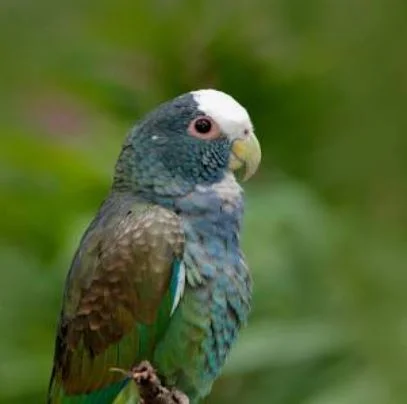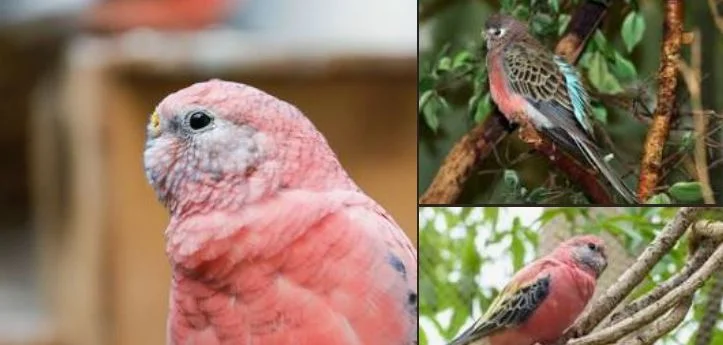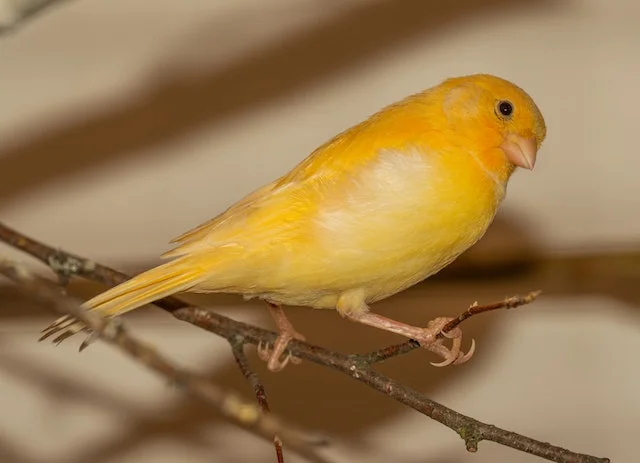When it comes to pets, many people immediately think of cats and dogs. However, there is a growing interest in unconventional pets like birds. For those who suffer from allergies but still, dream of having a feathered friend, hypoallergenic bird species can be a fantastic solution. In this article, we will delve into the world of hypoallergenic birds, offering a comprehensive guide for bird enthusiasts and allergy sufferers alike.
What Makes a Bird Hypoallergenic?
Before we dive into specific bird species, it’s vital to understand what makes a bird hypoallergenic. Allergies are typically triggered by proteins found in a pet’s dander, saliva, and urine. While no bird can be completely hypoallergenic, some produce fewer allergenic proteins than others, making them a better choice for individuals with allergies.
Exploring Allergenic Proteins
Birds, like other animals, produce allergenic proteins. These proteins can become airborne when birds preen themselves, shed feathers, or scratch their skin. However, hypoallergenic birds produce fewer of these proteins, reducing the risk of allergic reactions in their owners.
Why Are Humans Allergic to Birds? Understanding Avian Allergens
To truly appreciate hypoallergenic bird species, it’s vital to grasp why humans can be allergic to birds in the first place. Avian allergies are primarily triggered by proteins found in birds’ dander, feathers, saliva, and urine. These proteins can become airborne and easily inhaled, leading to allergic reactions. We’ll explore these allergens in detail, shedding light on the science behind avian allergies.
Diving into Feather Dust
Feather dust, often overlooked, plays a significant role in avian allergies. Birds continually shed minuscule feather particles and dander as they preen themselves. These particles can linger in the air, creating an environment ripe for allergic reactions. We’ll delve into the composition of feather dust and how it affects allergy sufferers.
Understanding Bird Saliva and Urine
Bird saliva and urine also contain allergenic proteins. When birds groom themselves or relieve themselves in their cages, these proteins can be released into the air or transferred onto surfaces. We’ll explore the specific proteins involved and the potential risks they pose to allergy-prone individuals.
Top Hypoallergenic Birds Species
The Pionus Parrot (Pionus spp.)

Pionus parrots are known for their gentle disposition and striking plumage. They are considered hypoallergenic because they produce fewer allergenic proteins. These charming birds make wonderful companions and are less likely to trigger allergies.
The Eclectus Parrot (Eclectus roratus)

Eclectus parrots are famous for their vibrant colors and talkative nature. Fortunately, they are also relatively hypoallergenic. Their low allergenic protein production makes them a suitable choice for individuals with allergies.
The Bourke’s Parakeet (Neopsephotus bourkii)

Bourke’s parakeets are small, affectionate birds with a calm demeanor. These charming parakeets produce minimal allergenic proteins, making them an ideal choice for allergy sufferers seeking a feathered companion.
The Canary (Serinus canaria)

Canaries are known for their melodic songs and vibrant plumage. These small birds have minimal allergenic proteins, making them a popular choice for allergy-prone individuals who enjoy the company of birds.
The Lovebird (Agapornis spp.)

Lovebirds are renowned for their affectionate behavior and colorful plumage. These birds produce fewer allergenic proteins, making them a suitable option for those with allergies who desire a loving avian companion.
How to Maintain Your Bird’s Cage
Cage Cleaning Essentials
A clean cage is vital for both your bird’s well-being and your allergy management efforts. We’ll outline a comprehensive cleaning routine, including the frequency of cage cleaning, recommended cleaning products, and best practices for maintaining a hygienic bird habitat.
Cage Placement and Ventilation
Where you place your bird’s cage can also impact allergen dispersion. We’ll offer insights into the ideal cage placement within your home and discuss proper ventilation techniques to minimize allergen buildup.
Ways to Minimize Bird Allergies
Air Purification Solutions
In addition to regular cleaning, air purification is key to reducing allergenic particles in your home. We’ll explore various air purification options, such as HEPA filters and UV-C air purifiers, and their effectiveness in creating an allergen-free environment.
What are HEPA filters?
HEPA stands for High-Efficiency Particulate Air. HEPA filters are a type of air filter that is exceptionally effective at capturing and trapping very small particles from the air, including dust, pollen, pet dander, mold spores, and even bacteria and viruses. These filters are commonly used in air purifiers and vacuum cleaners.
Key features of HEPA filters include:
- Efficiency: HEPA filters are designed to capture particles as small as 0.3 microns in size with an efficiency of 99.97% or higher. This high level of efficiency makes them ideal for improving indoor air quality.
- Particle Removal: HEPA filters can remove a wide range of airborne contaminants, making them particularly valuable for people with allergies, asthma, or other respiratory conditions.
- Air Purification: Air purifiers equipped with HEPA filters can circulate and clean the air in a room, reducing the concentration of allergens and pollutants.
- Health Benefits: Using HEPA filters can lead to improved indoor air quality, which can have a positive impact on respiratory health and overall well-being.
- Applications: HEPA filters are used not only in air purifiers but also in various industries, including healthcare, aerospace, and cleanrooms, where maintaining sterile environments is essential.
In summary, HEPA filters are highly efficient air filters that can help improve the quality of the air you breathe by capturing and removing tiny particles that may trigger allergies or respiratory issues. They are an excellent choice for maintaining clean and allergen-free indoor air.
Caring for Hypoallergenic Birds
Now that we’ve explored some hypoallergenic bird species, let’s discuss how to care for them. While they may be less likely to trigger allergies, proper care is essential for the well-being of any pet bird.
Diet and Nutrition
Ensure your hypoallergenic bird receives a balanced diet. Consult a veterinarian or avian specialist to determine the best food options for your specific species.
Cage and Environment
Create a clean and safe environment for your bird. Regularly clean the cage, provide fresh water, and offer toys and perches for mental stimulation.
Regular Vet Checkups
Schedule regular checkups with an avian veterinarian to monitor your bird’s health and address any concerns promptly.
Allergy Testing and Consultation
Before bringing a bird home, it’s wise for allergy sufferers to undergo allergy testing to confirm their specific sensitivities. We’ll explain the importance of consultation with allergists and avian veterinarians to ensure a safe and enjoyable experience for both owner and bird.
Even with hypoallergenic birds, it’s essential to manage allergens effectively. Keep your bird’s living area clean, wash your hands after handling them, and consider using air purifiers with HEPA filters.
Tips for Selecting a Hypoallergenic Bird
- Research Species: Explore hypoallergenic bird species like Pionus parrots, Eclectus parrots, Bourke’s parakeets, Canaries, and Lovebirds to find one that suits your lifestyle.
- Allergy Testing: If you have allergies, consult with an allergist to determine your specific sensitivities before choosing a bird.
- Meet the Bird: Spend time with potential avian companions to ensure you’re compatible in terms of personality and energy levels.
Tips for Caring for Your Hypoallergenic Bird
- Balanced Diet: Consult an avian veterinarian for advice on a well-rounded diet that meets your bird’s nutritional needs.
- Regular Baths: Provide your bird with regular baths or misting sessions to keep their feathers clean and reduce allergenic particles.
- Feather Maintenance: Groom your bird’s feathers carefully to minimize feather dust and dander release.
- Clean Environment: Keep your bird’s cage and living area clean by regularly removing droppings and providing fresh water.
- Allergen Management: Wash your hands after handling your bird, and consider using air purifiers with HEPA filters to reduce allergen levels in your home.
- Veterinary Care: Schedule regular checkups with an avian veterinarian to monitor your bird’s health.
Tips for Creating a Bond with Your Bird
- Social Interaction: Spend quality time with your bird to build a strong bond through talking, playing, and training.
- Mental Stimulation: Provide toys and activities to keep your bird mentally engaged and prevent boredom.
- Respect Boundaries: Be aware of your bird’s comfort zone and avoid forcing interactions.
- Positive Reinforcement: Use positive reinforcement techniques when training your bird to create a positive and trusting relationship.
- Patience: Building a bond takes time; be patient and understanding with your feathered companion.
By following these tips, you can enjoy a harmonious relationship with your hypoallergenic bird while minimizing allergy-related concerns.
Conclusion
Hypoallergenic bird species offer a unique opportunity for allergy sufferers to enjoy the companionship of feathered friends without the constant worry of allergic reactions. Whether you opt for a Pionus parrot, an Eclectus parrot, a Bourke’s parakeet, a canary, or a lovebird, these birds can bring joy and beauty into your life. With proper care and allergen management, you can share a fulfilling bond with your hypoallergenic bird.
Frequently Asked Questions (FAQs)
Are hypoallergenic birds entirely allergen-free?
No, hypoallergenic birds still produce some allergenic proteins, but they produce fewer of them compared to other bird species, reducing the risk of allergic reactions.
Can I train a hypoallergenic bird to talk?
Yes, many hypoallergenic bird species, such as Eclectus parrots and Lovebirds, can be trained to talk and mimic sounds.
Do hypoallergenic birds require special care?
While hypoallergenic birds produce fewer allergenic proteins, they still need proper care, including a balanced diet, a clean environment, and regular vet checkups.
Can children with allergies have hypoallergenic birds as pets?
It’s essential to consult with an allergist before bringing any pet into a household with allergy-prone individuals, including children.
Are there other hypoallergenic pets besides birds?
Yes, some hypoallergenic pets include certain dog breeds like poodles and hairless cats. However, birds are an excellent option for those who prefer avian companionship.
Is a Lovebird hypoallergenic?
Lovebirds are not considered hypoallergenic. While they produce less dander compared to larger parrots. They can still trigger allergies in sensitive individuals.
Can lovebirds cause allergies?
Yes, lovebirds can cause allergies in people who are sensitive to bird allergens, which can be found in their dander, feathers, saliva, and feces.
What is the most hypoallergenic bird?
There is no single “most hypoallergenic” bird, as individual allergies vary. However, smaller birds with less dander and fewer feathers are generally considered less likely to cause allergies.







Leave a Comment
You must be logged in to post a comment.